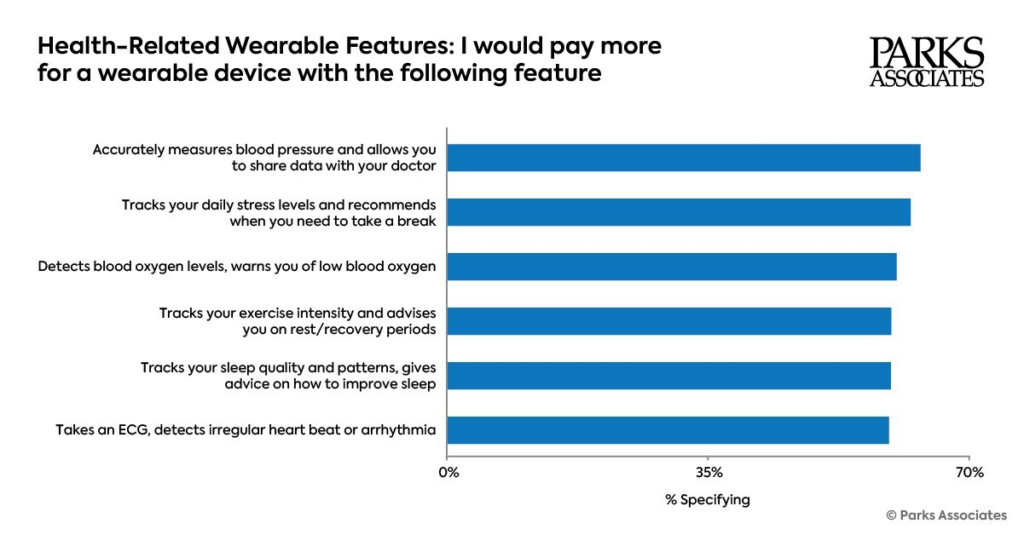- Research
- Smart Home: Products And Services
- Consumer Electronics and Entertainment
- Broadband and Mobility
- Connected Health and Wellness
- MDU / Multifamily
- SMB
- Strategic Consulting Unit
- Primary Research
- Research Services
- Events
- Event
- Company
- About Parks Associates
- Smart Home: Products And Services
- Smart Home Devices, Automation, Controls
- Energy Management
- Residential Security
- Consumer Electronics and Entertainment
- Consumer Electronics Devices
- Video Services: OTT, Pay TV
- Entertainment Content: Video, Audio, Gaming

 A recent consumer study conducted by Parks Associates reveals that nearly 50% of U.S. internet households now own and actively use wearable devices, underscoring the growing demand for health and safety features in these products.
A recent consumer study conducted by Parks Associates reveals that nearly 50% of U.S. internet households now own and actively use wearable devices, underscoring the growing demand for health and safety features in these products. 
